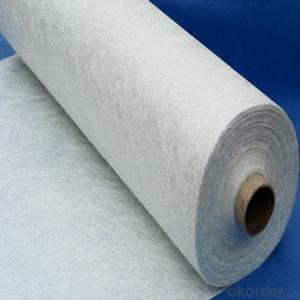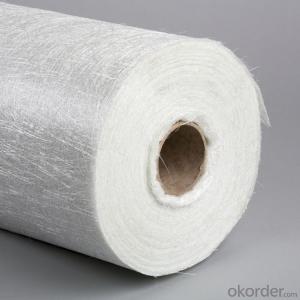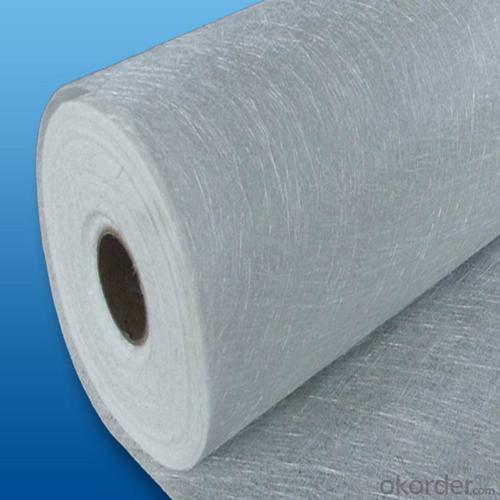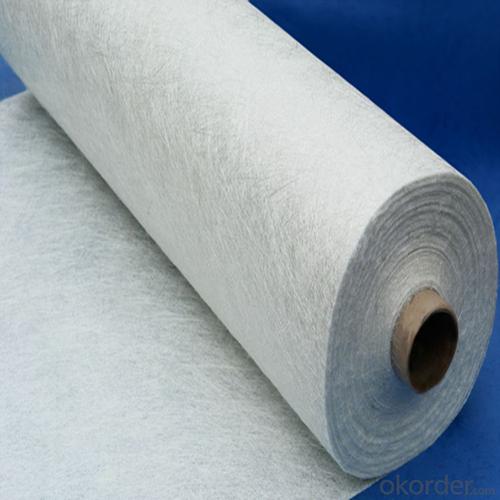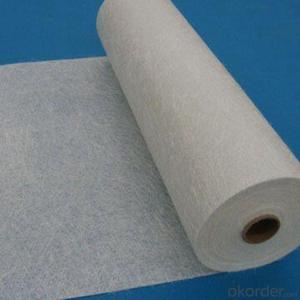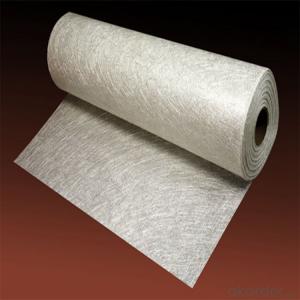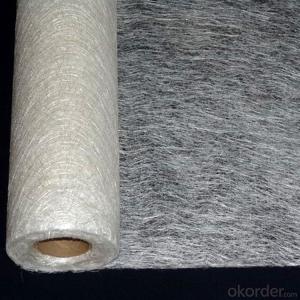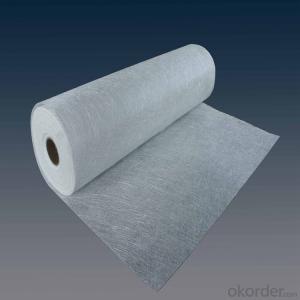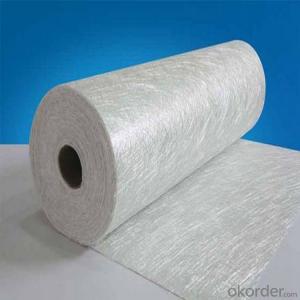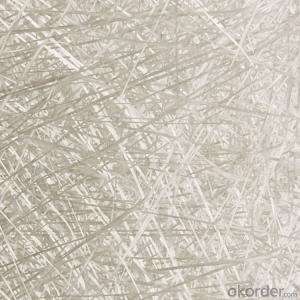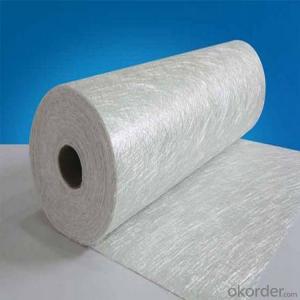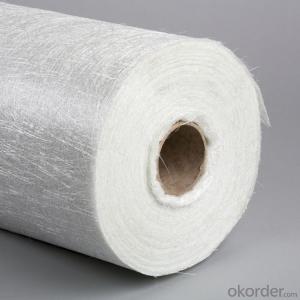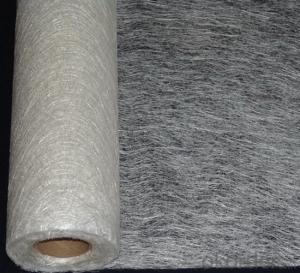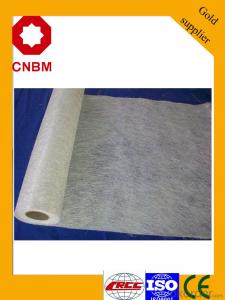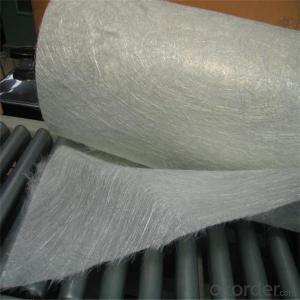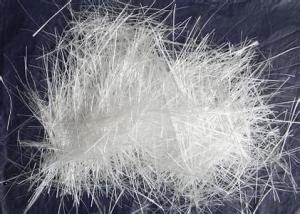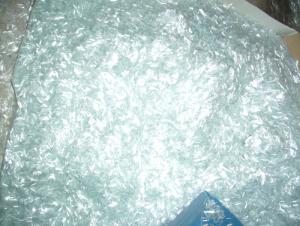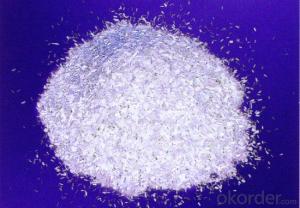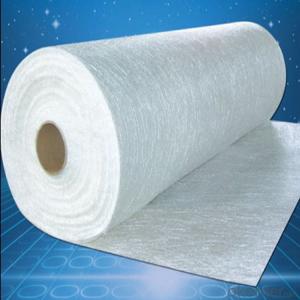Chopped Strand Fiberglass Mat 300 g/m2
- Loading Port:
- China main port
- Payment Terms:
- TT OR LC
- Min Order Qty:
- 1 kg
- Supply Capability:
- 5000 kg/month
OKorder Service Pledge
OKorder Financial Service
You Might Also Like
Product Description:
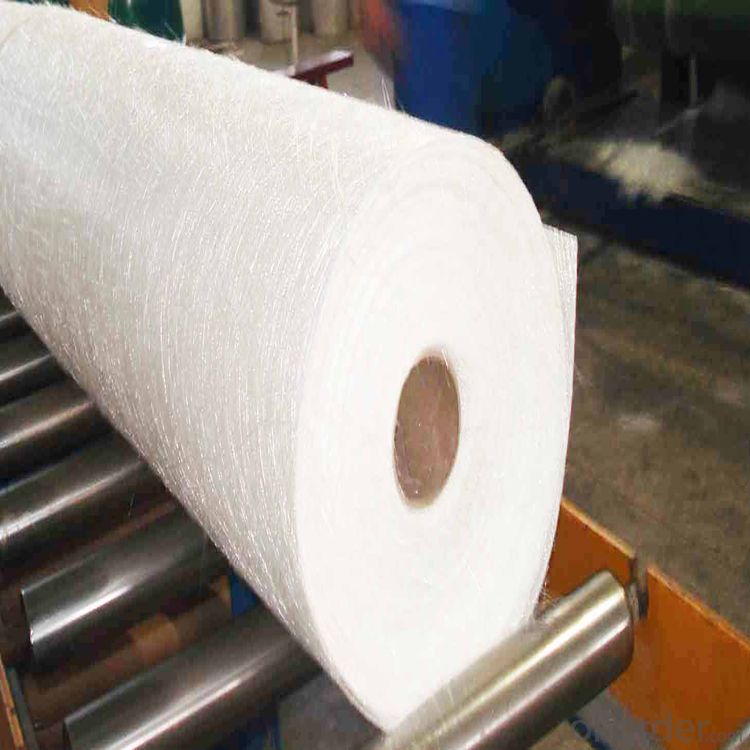
Surfacing Tissue mainly used in the surface layers of FRP products. It features even Fiber distribution, soft feel, level and smooth fiber surface, less glue content, quick resin soak and good pattern fitness. It can improve the product surface property on corrosion resistance, compressive strength, seepage resistance, and longer service life. It is also suitable for spraying; pattern pressing and other FRP pattern technology.
Surfacing Tissue mainly used in the surface layers of FRP products. It features even Fiber distribution, soft feel, level and smooth fiber surface, less glue content, quick resin soak and good pattern fitness. It can improve the product surface property on corrosion resistance, compressive strength, seepage resistance, and longer service life. It is also suitable for spraying; pattern pressing and other FRP pattern technology.
Product Features:
Fast breakdown in styrene
Fiber dispersed evenly
Low binder content
Superior acid corrosion resistance
Specifications:
Item | Over Density | Moisture Content | Chop Density | Polyester Yarn | Width |
(g/m2) | (%) | (g/m2) | (g/m2) | (mm) | |
EMK300 | 309.5 | ≤0.15 | 300 | 9.5 | 50-3300 |
EMK380 | 399 | 380 | 19 | ||
EMK450 | 459.5 | 450 | 9.5 | ||
EMK450 | 469 | 450 | 19 | ||
EMC0020 | 620.9 | 601.9 | 19 | ||
EMC0030 | 909.5 | 900 | 9.5 |
Product Packaging:
Each Surface Tissue is wound onto a paper tube which has an inside diameter of 76mm and the mat roll has a diameter of 330mm. The mat roll is wrapped up with plastic film,and then packed in a cardboard box or wrapped up with kraft paper. The rolls can be vertically or horizontally placed. For transportation, the rolls can be loaded into a cantainer directly or on pallets.

Product Storage:
Unless otherwise specified, Chopped Strand Mat should be stored in a dry, cool and rain-proof area. It is recommended that the room temperature and humidity should be always maintained at 15℃~35℃ and 50%~75% respectively.
Company Information
CNBM (China National Building Material) Group is the largest comprehensive building materials group in China that in integrate scientific research, manufacturing and logistics into one entity. The largest building materials and equipment specialists in China. Upon State Council approval, today CNBM owned more than 300 subordinate manufacturing factories and servicing companies. There are 6 fully owned public listed companies and 11 partially owned with substantial shares public listed companies. In many of these fields, CNBM is playing the leading role in the building industry in the country.
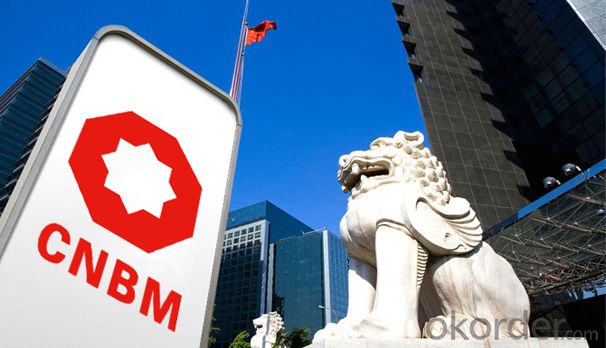
- Q: How does the density of fiberglass chopped strand composites compare to other materials?
- The density of fiberglass chopped strand composites is generally lower compared to other materials, such as metals or solid plastics. This is due to the lightweight nature of fiberglass and the incorporation of air pockets within the composite structure.
- Q: How does the processing temperature of fiberglass chopped strand affect its performance?
- The processing temperature of fiberglass chopped strand has a significant impact on its overall performance. Generally, fiberglass chopped strand is processed at high temperatures during the manufacturing process, typically around 250-300 degrees Celsius (482-572 degrees Fahrenheit). The processing temperature affects the physical and mechanical properties of the fiberglass chopped strand. At higher temperatures, the glass fibers become more flexible and can be easily molded into various shapes and forms. This enables the fiberglass chopped strand to be used in a wide range of applications, from automotive parts to construction materials. Furthermore, the processing temperature also influences the adhesion and bonding properties of the fiberglass chopped strand. At higher temperatures, the resin used to bind the glass fibers together can fully penetrate and encapsulate the fibers, resulting in stronger and more durable composites. This enhanced bonding strength is crucial for applications where the fiberglass chopped strand is subjected to high mechanical stress or environmental factors. However, it is important to note that excessively high processing temperatures can have detrimental effects on the performance of the fiberglass chopped strand. If the temperature exceeds the glass transition temperature of the fibers, they may lose their structural integrity and become brittle. This can lead to reduced strength and stiffness, making the fiberglass chopped strand less suitable for demanding applications. In summary, the processing temperature of fiberglass chopped strand plays a critical role in determining its performance. Proper control and optimization of the processing temperature are essential to ensure the desired physical, mechanical, and bonding properties of the fiberglass chopped strand are achieved for specific applications.
- Q: How does the creep resistance of fiberglass chopped strand compare to other reinforcing materials?
- Fiberglass chopped strand is widely regarded as having superior creep resistance compared to many other reinforcing materials. It is renowned for its high tensile strength, enabling it to withstand significant loads without deformation over time. This resistance to creep is especially beneficial in applications where the material experiences constant or repetitive stress, such as in structural components or automotive parts. In terms of creep resistance, fiberglass chopped strand offers several advantages over other reinforcing materials like carbon fiber or steel. Although carbon fiber possesses a high strength-to-weight ratio, it is more susceptible to creep under sustained loads. On the other hand, steel exhibits excellent load-bearing capabilities but is prone to creep over time. With its unique combination of high tensile strength and low creep properties, fiberglass chopped strand provides a reliable and durable solution for various applications. Its resistance to creep ensures that the material will maintain its structural integrity and dimensional stability over an extended period. This makes it an ideal choice in industries where long-term performance is crucial, such as aerospace, construction, and marine sectors. Additionally, fiberglass chopped strand boasts high resistance to corrosion, setting it apart from materials like steel. This corrosion resistance allows it to be utilized in harsh environments or exposed to moisture without compromising its mechanical properties. In conclusion, the creep resistance of fiberglass chopped strand is generally superior to that of other reinforcing materials like carbon fiber or steel. Its high tensile strength, low creep properties, and corrosion resistance make it a reliable and durable choice for various applications.
- Q: How can glass be ground into powder?
- Ground glass fibers are made from specially made continuous glass fiber strands which are cut, ground and sieved,
- Q: Can fiberglass chopped strand be used in the manufacture of pipes and tanks?
- Yes, fiberglass chopped strand can be used in the manufacture of pipes and tanks. Fiberglass chopped strand is a reinforcing material made from fine glass fibers that are cut into short lengths. These chopped strands are then combined with a resin matrix to create a composite material that is strong, lightweight, and corrosion-resistant. In the manufacturing process of pipes and tanks, fiberglass chopped strand can be used as a reinforcement layer to enhance the structural integrity of the final product. It provides increased tensile and flexural strength, as well as improved dimensional stability, making it an ideal material choice for applications that require durability and longevity. Furthermore, fiberglass chopped strand offers excellent resistance to chemicals, moisture, and environmental factors. This makes it suitable for pipes and tanks that will be exposed to harsh conditions or corrosive substances, such as in industrial settings or underground installations. Additionally, fiberglass chopped strand can be easily molded into various shapes and sizes, allowing for flexibility in design and customization. It can be used in both filament winding and hand lay-up processes, making it compatible with different manufacturing techniques. Overall, the use of fiberglass chopped strand in the manufacture of pipes and tanks offers numerous benefits, including increased strength, corrosion resistance, and versatility in design. It is a reliable and cost-effective solution for creating durable and high-performance products in various industries.
- Q: Is fiberglass chopped strand suitable for renewable energy applications?
- Yes, fiberglass chopped strand is suitable for renewable energy applications. Fiberglass is a versatile material known for its strength, durability, and resistance to corrosion, making it an ideal choice for various renewable energy applications. In wind energy, fiberglass chopped strand is commonly used in the manufacturing of wind turbine blades. The material's high tensile strength and ability to withstand harsh weather conditions make it an excellent choice for this application. Fiberglass also offers lightweight properties, which is crucial for minimizing the weight of the blades and maximizing energy production. Furthermore, fiberglass chopped strand is used in the construction of solar panels. The material provides excellent electrical insulation, which is essential for maintaining the efficiency and safety of solar panels. Fiberglass also offers high thermal resistance, enabling the panels to withstand extreme temperatures and prolong their lifespan. Additionally, fiberglass chopped strand can be used in the manufacturing of hydroelectric power equipment. Its corrosion resistance properties make it suitable for withstanding the harsh conditions present in hydroelectric power plants, such as exposure to water and moisture. Overall, fiberglass chopped strand is a reliable and effective material for renewable energy applications. Its strength, durability, and resistance properties make it a suitable choice for wind energy, solar power, and hydroelectric power applications.
- Q: Can fiberglass chopped strand be used in water treatment tanks?
- Indeed, water treatment tanks can utilize fiberglass chopped strand. Renowned for its remarkable corrosion resistance and impressive strength-to-weight ratio, fiberglass proves to be a fitting material for a multitude of water treatment industry applications. By employing chopped strand fiberglass, the tanks gain reinforcement, enhancing their durability and resilience against deterioration. Furthermore, fiberglass remains non-reactive to water and refrains from releasing any hazardous substances, a pivotal aspect in the preservation of water quality within treatment tanks. All in all, fiberglass chopped strand emerges as a dependable and efficacious material choice for implementation in water treatment tanks.
- Q: How is the tensile strength of fiberglass chopped strand determined?
- The tensile strength of fiberglass chopped strand is determined through standardized testing methods, such as ASTM D2343 or ISO 3341. These tests involve subjecting the chopped strand to a controlled force in one direction until it breaks. The force required to reach the breaking point is then measured, and this value represents the tensile strength of the fiberglass chopped strand.
- Q: How does the moisture content of fiberglass chopped strand affect its performance?
- The moisture content of fiberglass chopped strand can significantly impact its performance. Excess moisture can lead to reduced mechanical properties, such as decreased tensile strength and impact resistance. It can also cause delamination or blistering of the resin matrix, reducing the overall integrity of the composite material. Additionally, moisture can promote the growth of microorganisms, leading to degradation and potential failure over time. Therefore, it is essential to ensure proper moisture control and storage conditions for fiberglass chopped strand to maintain optimal performance.
- Q: Can fiberglass chopped strand be used in sports equipment?
- Yes, fiberglass chopped strand can be used in sports equipment. It is commonly used in the manufacturing of various sports equipment such as skis, snowboards, surfboards, baseball bats, and hockey sticks. The fiberglass reinforcement provides strength, stiffness, and durability to these products, making them suitable for high-performance sports activities.
Send your message to us
Chopped Strand Fiberglass Mat 300 g/m2
- Loading Port:
- China main port
- Payment Terms:
- TT OR LC
- Min Order Qty:
- 1 kg
- Supply Capability:
- 5000 kg/month
OKorder Service Pledge
OKorder Financial Service
Similar products
Hot products
Hot Searches
Related keywords

